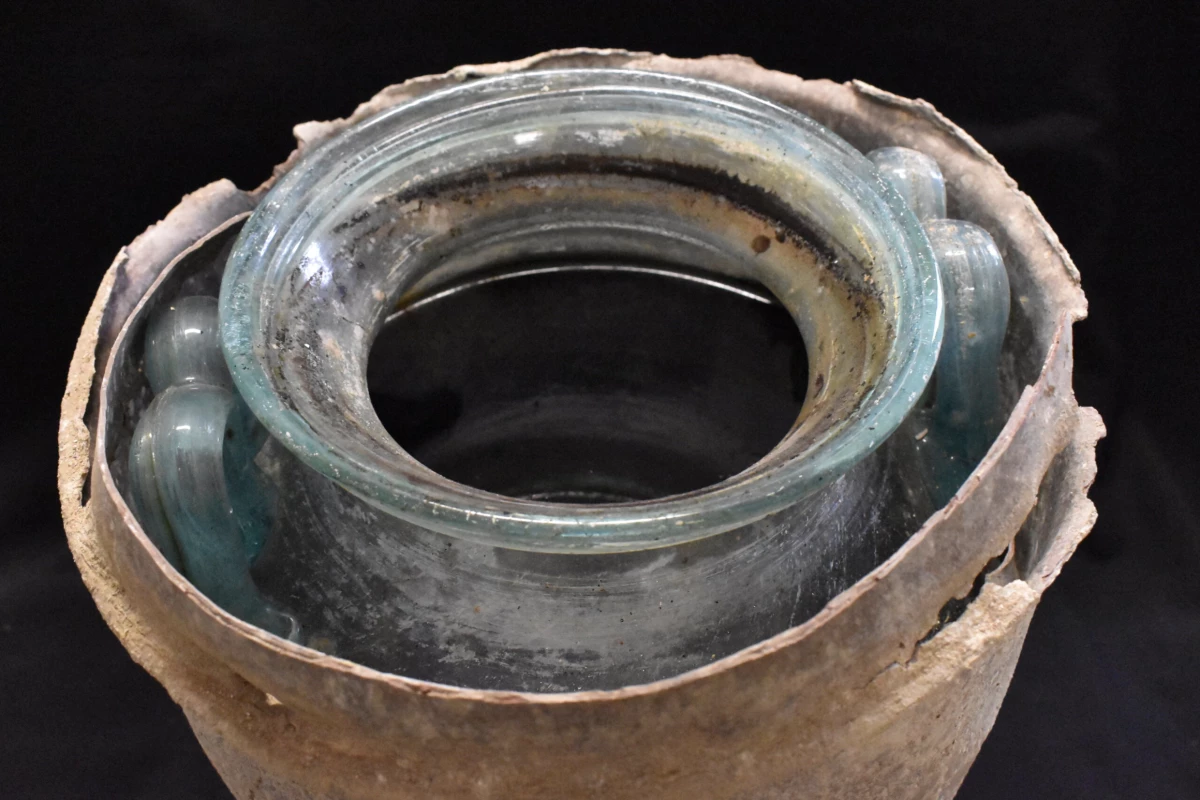An ash urn inside a house in southern Spain has been found to contain the world's oldest white wine – and it's still drinkable. But we're not sure how many people would be eager to sip this vintage vino, because the 'wine cellar' was in fact a Roman tomb, and the liquid had also been infused with cremated human remains.
The discovery was made back in 2019, with the unearthing of the tomb that formed part of the western necropolis of Carmo, the ancient Roman city that is these days more recognizable as the modern-day Andalucían town of Carmona. Now, researchers from the University of Cordoba, led by Professor José Rafael Ruiz Arrebola, have analyzed the urn's content and confirmed that the reddish-tinged liquid is in fact white wine – the oldest on record.
The wine had been preserved in a funerary urn within the sealed, undisturbed tomb that also housed six bodies. In the liquid were the charred bones of a male, whose cremated remains (and a ring) were also found on a funeral bed nearby.
"At first we were very surprised that liquid was preserved in one of the funerary urns," said the City of Carmona's municipal archeologist Juan Manuel Román.
Another urn was found alongside a cremated woman, but instead of wine it contained amber jewels, a bottle of perfume and remnants of a silk fabric. In ancient Rome, women were forbidden from drinking wine, so even after death, only the men were likely to be presented, on their way to the afterlife, with a glass of vino.
While the discolored liquid had remained a mystery, Arrebola's team had suspected it was wine and undertook chemical analyses to test its pH, mineral salts and other compounds, and compared it to present-day Montilla-Moriles, Jerez and Sanlúcar varieties, which have a similar mineral salt composition.
High-performance liquid chromatography-mass spectrometry (HPLC-MS) was then used to identify polyphenols – biomarkers found in all wines. These results, as well as an absence of red-wine-specific syringic acid, confirmed that this ancient drop was a white variety.
And if you're curious (hey, we were), the liquid itself remains drinkable, with Arrebola stating that "it's not in the least bit toxic." Still, we're not sure "notes of charred human bones from the first century AD" is likely to be a popular flavor profile anytime soon.
This amber liquid topples the previous oldest tipple uncovered – the famous Speyer wine bottle discovered in 1867, which dates back to the fourth century AD.
The research was published in the Journal of Archaeological Science: Reports.
Source: University of Córdoba via phys.org





